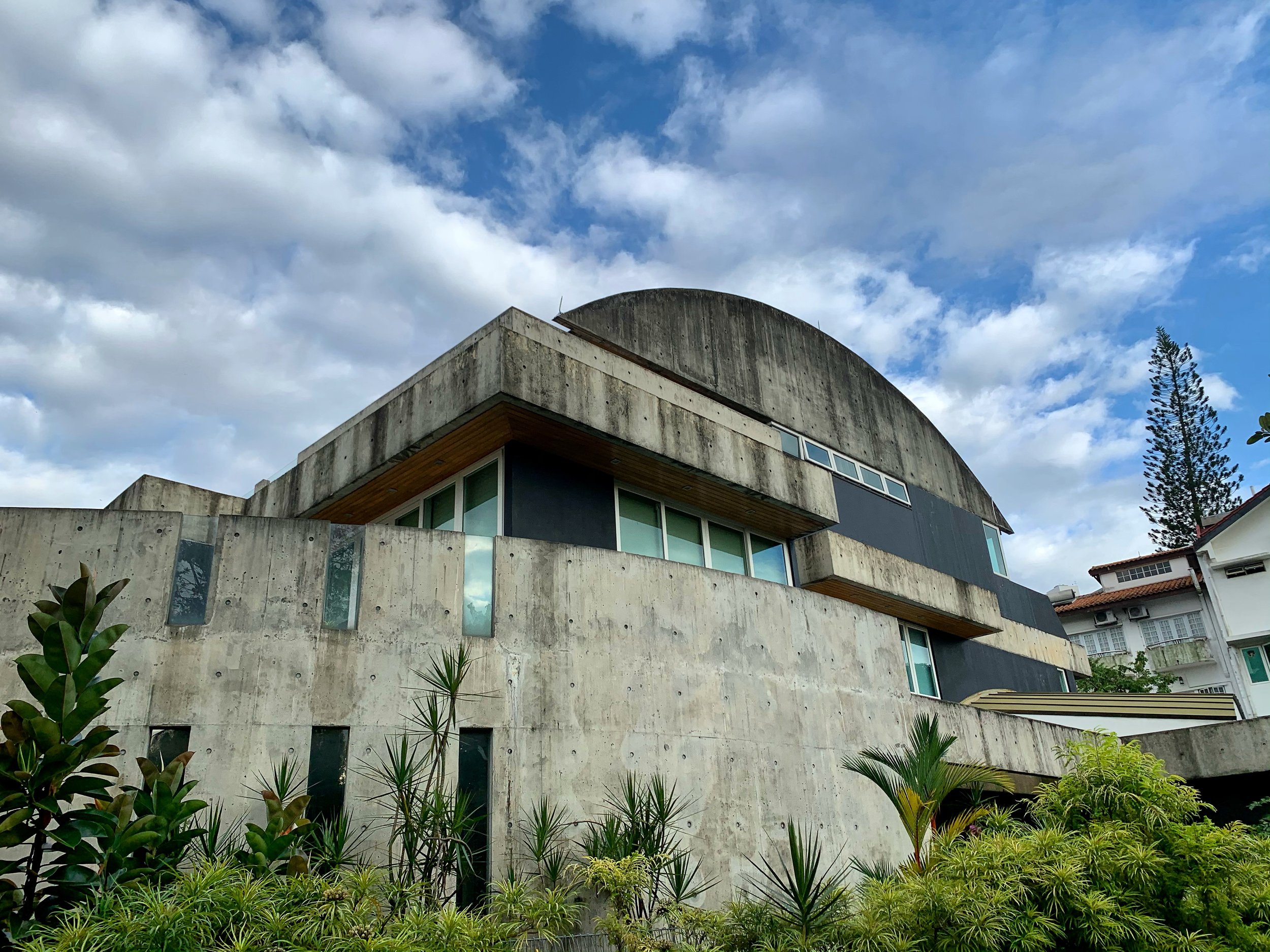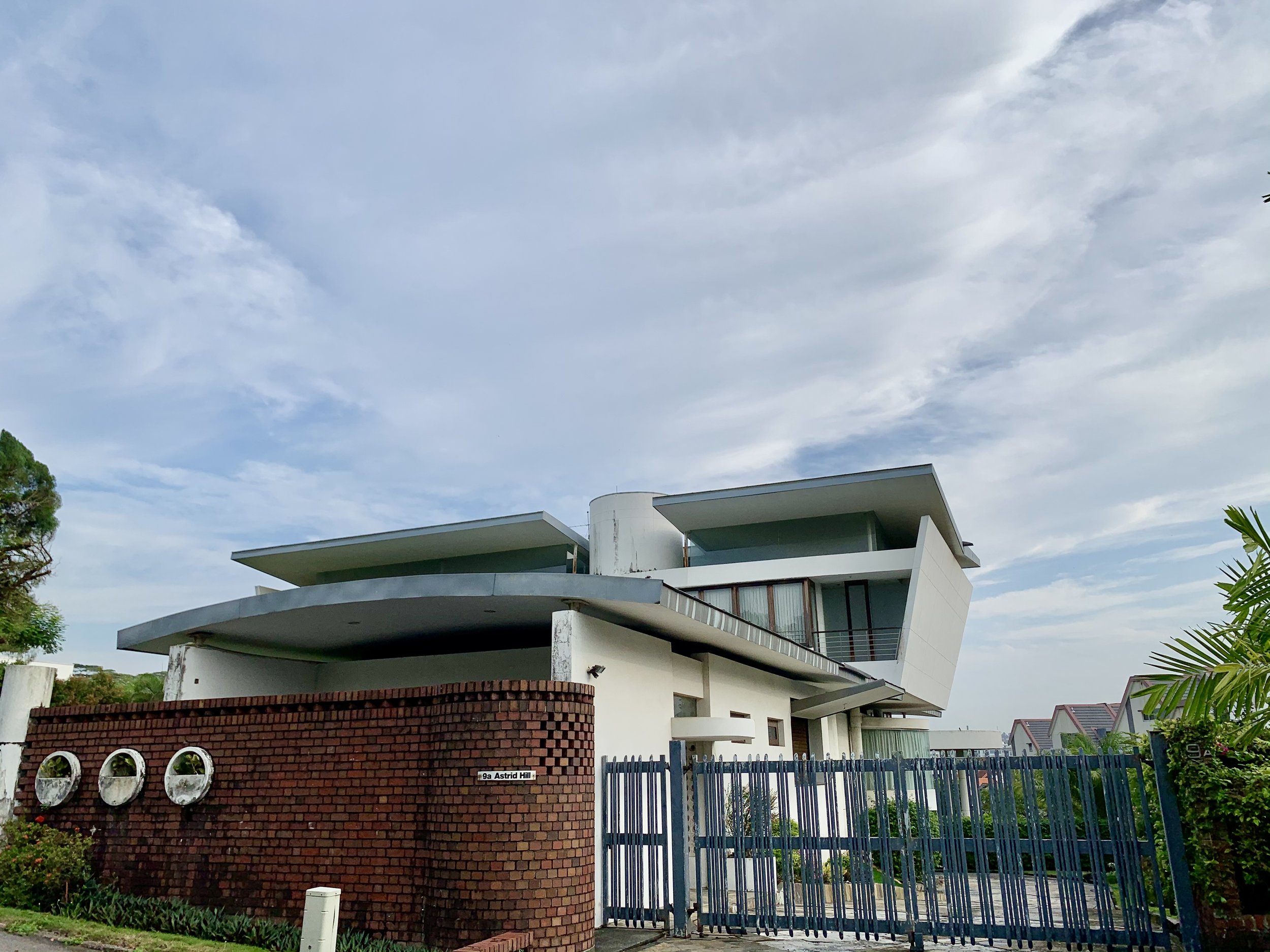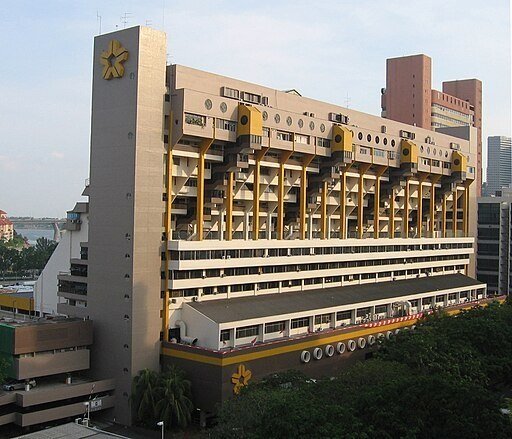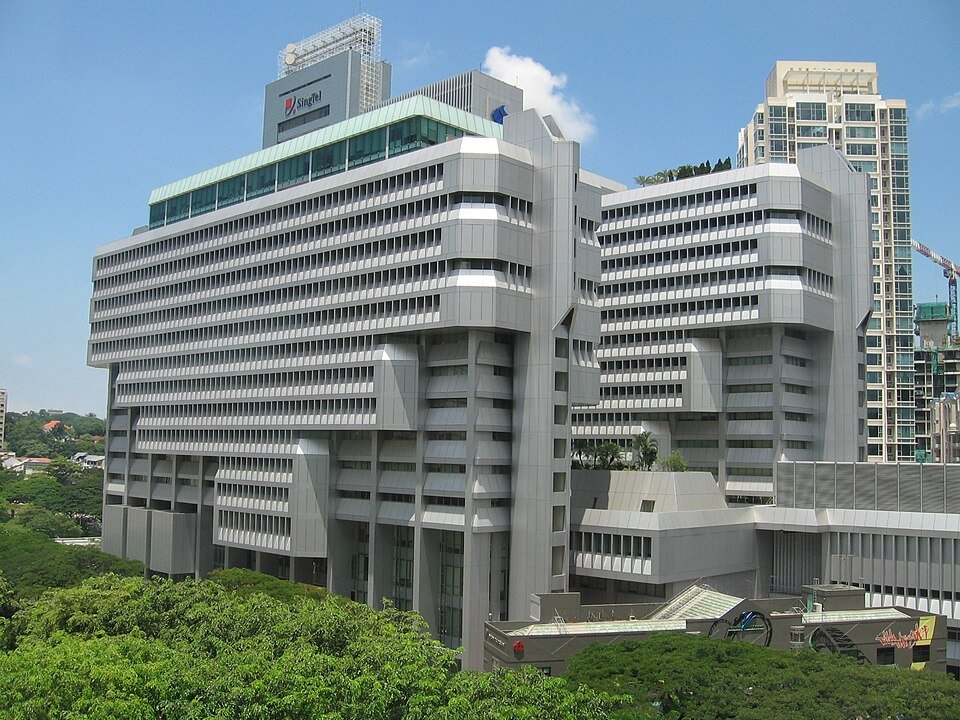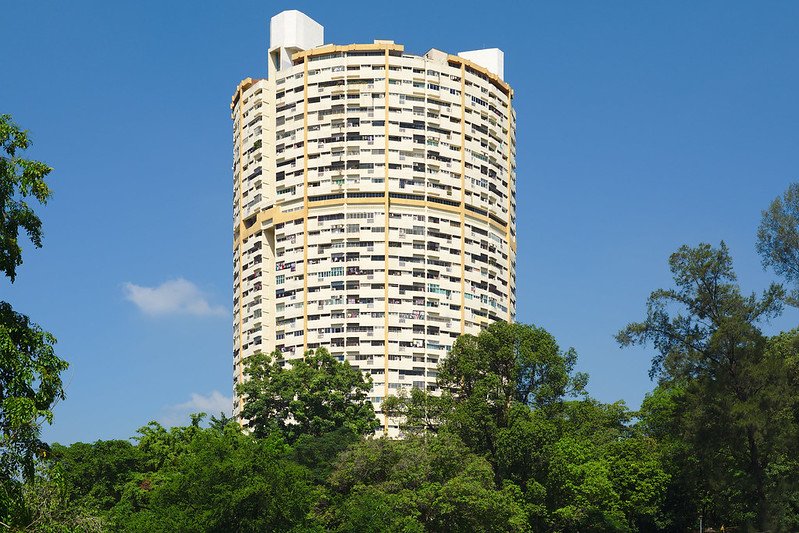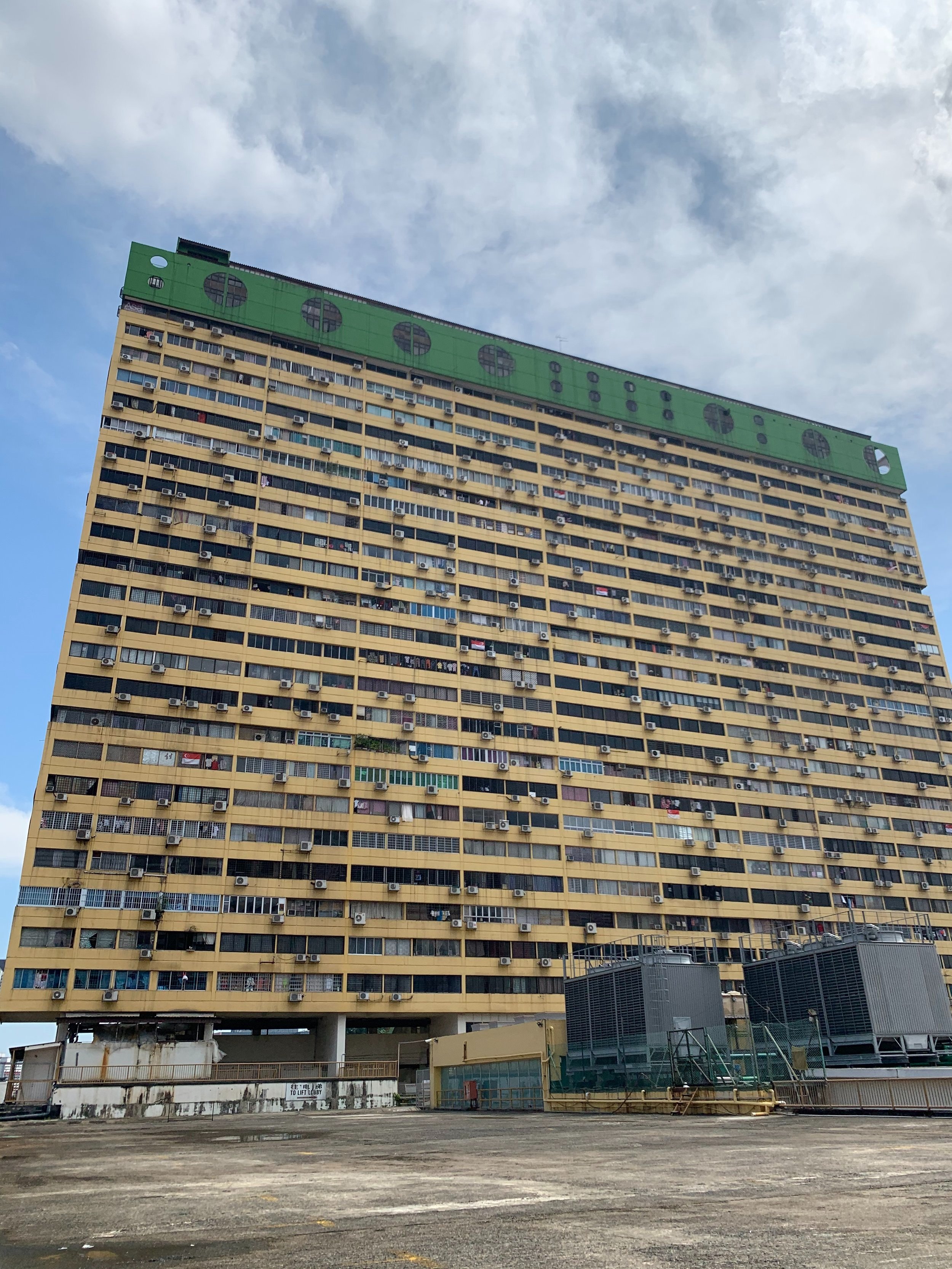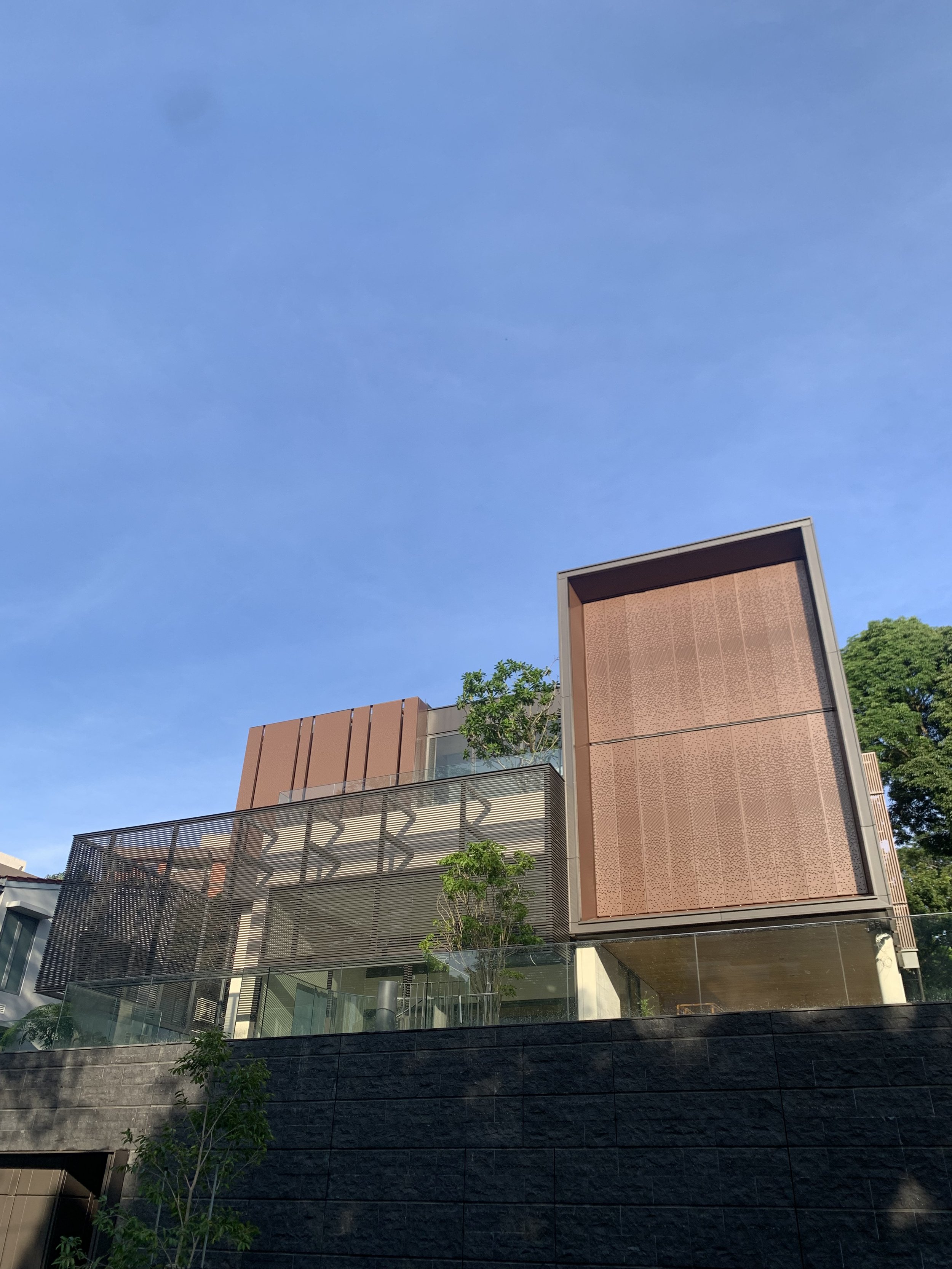A slightly random little post this one unrelated to conservation or the environment. One which links back to an old story I wrote on this blog relating to my time spent hunting for quirky houses during the pandemic.
I’ve not done the walks so much recently, due in equal part to now having a proper job and also having exhausted many of the best spots for eclectic residential architecture in Singapore. I do still try and get out every now and again, looking for new locations or to see if any of the houses previously under construction have now been completed – such is the length of time I’ve been pursuing this odd hobby. For evidence you can view the related Instagram account here
Anyway, I’ve happened to undertake a couple of ‘hunts’ in recent days and on both occasions have been saddened to discover that two of my favourite brutalist-inspired homes have been demolished to make way for new houses.
I understand that tastes and trends change. I also understand that the harsh, concrete lines of brutalism have never been for everyone. Personal aesthetics aside though it seems a shame that both of these unique buildings have been wiped off Singapore’s architectural map. Fortunately, I managed to take photos before they were gone (see the images) but obviously it’s not the same.
It’s doubly sad as it seems to chime with a wider trend where many Singapore’s Brutalist-inspired landmarks, such as the horseshoe-shaped Pearl Bank Apartments have suffered the same fate in recent years.
There are still a few examples left, including the Triple One Somerset on Orchard and, a personal favourite, People’s Park Complex in Chinatown. Recently the ‘Little Thailand’ of Singapore, the Golden Mile Complex, a boxy but stylised mixed-used mall, did get saved from demolition, thanks to government intervention. However, it is now closed for a major renovation and its still unclear how the exterior may change. As a random aside it’s interesting that two of my favourite ever Singapore bars were located in two of these venues.
Still, the saving of Golden Mile was hard fought and not popular with everyone. It’s a shame that these unique structures aren’t always viewed with the same affection as more obviously ‘historic’ buildings like the colonial black and whites or the old shophouses in Chinatown.
As I said, I appreciate the need for change, and Singapore is never a place that settles for standing still. In fact, there is currently a rash of residential developments taking place right now in the city – perhaps a result of properties owned by the original pioneer generation now passing over to their children.
An example of the new boxy designs
My real worry is that many of the new builds that are replacing these more unique homes seem to be adopting a universal, utilitarian blah-ness. Boxy, enclosed, muted in tone, and often covered in protected shutters, they seem very insular and very negative in their aesthetic. I appreciate that style is subjective, but my bigger concern is the fact that they all look so boringly similar.
Maybe it’s simply a result of current building restrictions, designed to make new homes more sustainable and more energy-efficient. But I do also wonder if it’s an unconscious reflection of the times. A reaction to the apparent (or real) evils lurking in the wider world, leading many to build their own ‘bunkers’ designed to keep them safe and hidden from the dangers of today’s society.
Who knows? I am sure local architects could make a very strong case dismissing all the above as absolute rubbish. And at the end of the day, I am sure it’s down to my own inability to handle change and the nostalgia-induced by getting older.
However, I do hope that the current rash of new builds are like brutalism, just a passing trend, and that there’s still room for a new wave of quirky uniqueness in the next batch of Singapore’s homes.

